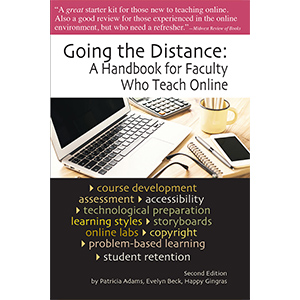Why Pedagogy Matters in Teaching English Online

by Erin Beard
As more and more higher education classes move to an online format, it’s necessary for teachers to address the pedagogical challenges that come along with the online learning environment. In the Department of English this year, one of the challenges that we talked about specifically was that of teaching close reading outside of the classroom, where discussion (and the serendipitous teaching moments that come along with it) is highly valued. When we teach close reading, we like to model it and address, through discussion, the techniques and vocabulary that students have the most difficulty with. We often find, too, that hearing students think out loud and working with them through challenging interpretations produces the kind of learning outcomes we want to see in a discipline where interpretive skill is our bread and butter.
Close reading is defined in a lot of different ways, but generally, it is about relating the parts (formal strategies, word usage, metaphors, characters, etc.) of a text to the whole (plot, genre, etc.) and then forming an argument out of that relationship. In our department, English majors learn this skill by taking an entire class dedicated to it (Introduction to Literary Study I), and then they are expected to use it in every English class they take. Considering its importance to the discipline, surely there is someone out there who has written an article about teaching close reading in the online environment.
Turns out there’s not much. This probably has a lot to do with the fact that English departments are transitioning slowly into online teaching. But since our department is offering more online classes during the summer, and it’s my job this year to help prepare graduate students in our department to teach these classes, I decided to brainstorm this issue with other graduate students during one of the workshops I hosted. We talked about how we usually teach close reading in the classroom, what we think the challenges would be in transferring this pedagogy to the online learning environment, and how we could adapt available resources for this purpose.
We like to teach close reading by modelling it in the classroom, discussing the details of a particular passage as a class, and assigning lots of writing. If we’re focusing the majority of the class on teaching this skill, as we would in Introduction to Literary Study I, we might spend a lot time learning the “vocabulary” that goes along with studying English (e.g., omniscient narration, meter). It’s easier to teach these terms in an online setting, but it’s more difficult to discuss them and their application with students and give students feedback on how well they’re doing. Additionally, we were mostly worried about the lack of real-time discussion that so often produces the most meaningful learning moments for students in the classroom. How do we compensate for the anonymity of the online learning environment?
We decided on a few strategies that would mitigate these challenges somewhat. One was breaking down the process of reading into more digestible parts and gradually building up to a full close reading over the course of the semester. Another was using collaborative and discussion-based tools and platforms, like Google docs or Poetry Genius, to bring students into conversation with each other and to allow them to work together to produce a close reading. We also emphasized the idea that no matter the setting of the class, choosing content that was especially suited for close reading is really important. Finally, we found a few models for teaching close reading in a lecture that gave us strategies for compensating for anonymity and giving useful feedback.
One result of this workshop was that we recognized that our discipline needs to collectively think more about adapting to new teaching environments. The issue of close reading pedagogy in an online learning environment is really uncharted scholarly territory. But quite a few graduate students in our department have experience in developing online courses that address this issue, and so collectively, we had a lot of ideas to share and to work on.









